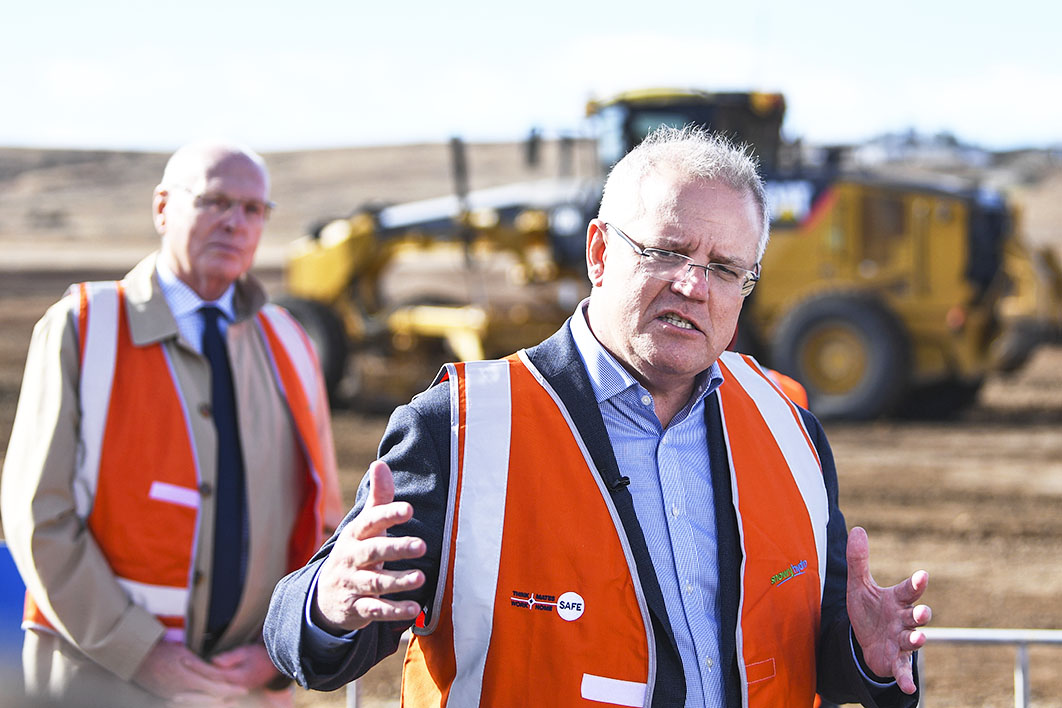The Covid-19 pandemic has focused attention on many kinds of workers, some of whom are usually almost invisible, working behind the scenes or outside normal hours. Cleaners, whose work is normally taken for granted, are suddenly of vital importance. Security guards, working in a poorly regulated industry, receive a blaze of attention when their poor training contributes to the second wave in Victoria. Delivery drivers provide a vital lifeline when lockdowns limit our access to shops.
These groups, mostly poorly paid, are in service occupations. But professionals — most obviously, health professionals, from public health experts to doctors and nurses — are also critical to our response. Parents who have suddenly had to oversee homeschooling have been made aware of the hard work done by teachers.
On the other side of the coin, millions of workers have lost their jobs, or kept them only because of the JobKeeper scheme. Those losses have been concentrated in tourism, restaurants and cafes, universities and other service sectors.
Most of the industries shut down by the pandemic, as well as most of those we’ve relied on in the fight to control it, are large employers of women. Job losses have been particularly concentrated in industries that employ young people, who are trying to make the transition from education to employment.
Yet anyone looking at the recovery strategies put forward by governments at state and federal levels would barely be aware that these occupations exist. The focus of all of these strategies is on the kinds of workers (mostly men) who wear hard hats and hi-vis clothing.
The federal government’s National Covid-19 Coordination Commission’s strategy is based on expanding the oil and gas industry, which employs about 20,000 people. The NSW government is even more backward-looking, attempting to extend the life of the doomed coal industry. The Queensland government’s strategy, focused on agriculture, mining, manufacturing and construction, is little better, but at least gives a nod to industries of the future. A fresh airing was given to other perennial proposals, including very fast passenger trains and the Bradfield scheme to turn back northern rivers.
It is hard to overstate how misconceived these strategies are. But it may be useful to look at some statistical evidence before going any further.
Australia’s workforce falls into three groups: manual workers (trades workers, machinery operators and drivers), service workers (community services, clerical and sales) and professionals (including managers). In February 2019, professionals constituted the largest of these groups (36 per cent of employed people), followed by service workers (33 per cent), with manual workers (30 per cent) making up the smallest group. This represents a reversal of the pattern in 1986, when manual workers made up 40 per cent of the workforce, service workers 32 per cent, and managers and professionals only 27 per cent.
Industry data makes the same point. As of February 2019, agriculture, mining and manufacturing accounted for about 10 per cent of the workforce, and construction less than 10 per cent. In total these hard-hat industries are slightly smaller than the combined totals for healthcare and education, a little over 20 per cent of all employment. The remaining 60 per cent of employment is spread across a range of service industries.
An industry strategy focused on hard hats would be misconceived at the best of times. But it is particularly inappropriate in the context of the pandemic. The industries being promoted as the way forward are not only declining in terms of employment share, they are overwhelmingly dominated by men and (with the partial exception of construction) by prime-age (twenty-five to fifty-five) and older workers.
Yet the pandemic has affected female workers, and young people of both genders, far more severely than prime-age men. Women have suffered both in terms of job losses and from the increased burden of domestic work arising from school closures. Younger workers were badly affected by underemployment even before the pandemic and are likely to suffer reduced income throughout their lives as a result of the crisis.
Sadly, none of this seems to matter to politicians faced by a photo opportunity in a hard hat. This is a time when we could do with some radical, even utopian, thinking about the way we organise life and work after the pandemic. Instead, we get policies that resemble an episode of Utopia. •




